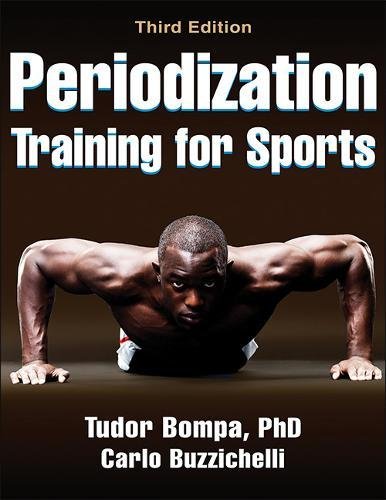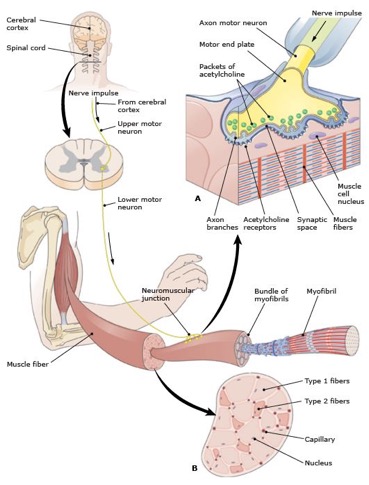
Periodization Training for Sports
Chapter 2, Neuromuscular Response to Training
The second chapter of Periodization Training for Sports highlights the Neuromuscular Response to Strength Training. The beginning of the chapter explores things that are important to understand regarding the basic understanding of body structure, muscle structure, muscular contraction, etc.. While those are undeniably important to the training process, if I dove into the sliding-filament theory, body types, and slow-twitch vs. fast-twitch muscle, I wouldn’t be able to do each of these justice. However, the chapter does discuss principles crucial to the concept of periodization and Bompa’s takes on classifying phases of a program are key to evaluating the focus of each segment.
Strength has 3 specific qualities: Maximum Strength, Power, and Muscular Endurance.
Maximum strength is the highest force an athlete can produce within a given movement. Power is a combination of speed and strength. It involves ‘the ability to apply the highest force in the shortest time.’ Muscular endurance involves the ability to repeat movements or maintain positions for a sustained period of time. These are crucial in the understanding of periodization and will become more involved later in this blog.
Potentially one of the most discussed portions of strength is the force-time curve. The ability to generate force in a variety of conditions with varying loads and velocities becomes crucial to the development of athletes. As already mentioned, the ability to produce the greatest amount of force possible includes maximum strength. During maximum strength repetitions, the time to completion is significantly longer.
When you begin to reduce the overall load, the ability to produce force decreases. However, with this lighter load, the time to complete a movement (for example a power clean) is shortened. As you move from maximum strength squats into power cleans, the load decreases, the relative speed increases, and you are beginning to ‘surf’ the force-time curve. In terms of evaluating movements along the force-time curve, Bompa uses 4 different specific classifications. From highest total force, slowest movements, maximum strength, power, explosive strength or rate of force development (RFD), and starting strength.
Usain Bolt is not the fastest man alive because he can squat more than the remainder of the human race. However, his ability to produce force over an extremely short period of time is unparalleled in the world of elite sprinting.
Beyond the Force-Time curve, type of muscle action is another way to classify strength. The 3 types of muscle action are concentric strength, the shortening of a muscle; isometric, creating tension without shortening the muscle; and eccentric, which is creating less tension than the external load while continuing to apply pressure, thus lengthening the muscle under tension.
The final two classifications are in relation to body weight and the degree of specificity. Absolute strength is the total weight an athlete is able to complete the exercise with. Relative strength is the ratio between the maximum absolute strength and body weight. In regards to degrees of specificity it progresses from general to specific strength.
Bompa’s definitions of strength phases progress as follows:
- Phase 1: Anatomical Adaptation,
- Phase 2: Hypertrophy,
- Phase 3: Maximum Strength,
- Phase 4: Conversation to Specific Strength, and
- Phase 5: Maintenance.
These phases are crucial to success in a periodized program. The reasoning behind an anatomical adaptation phase serves as a type of ‘prehabilitation’ phase. Strengthening tendons, ligaments, and joints is a primary objective of the phase. Prior to entering a hypertrophic-based phase, this allows a bulletproofing of connective tissues to support increased load over the course of coming mesocycles (middle length cycles of 4-6 weeks). During Hypertrophy, an increase in the Cross-Sectional area is a major focus. Following these two preparatory phases, the ability to produce strength maximally in the maximum allows athletes to create the maximum amount of force during a repetition. This will be a slower movement than possible but a the most weight and ultimately the most force an athlete can create. After increasing maximum strength, the 4th phase of converting to specific strength allows the athlete to move into more specific positions relative to the sport, and move at more specific velocities. We will never truly move at the speed of competition for a sport like track and field for example, however if we can utilize the ability to create force more rapidly, this will assist when the athlete gets back to sprinting maximally.

As the annual calendar of the sport progresses, a good coach must understand the appropriate phase focus and properly implement a program that builds the athlete towards their goals.
All of these differences in phases, different strength definitions, velocities, forces, and power are ways for a coach to better understand exactly what they’re programming for their athletes. Allowing an athlete to ‘check the boxes’ necessary to improve sport performance during a specific time of the year is a successful periodization model. In the next blog, I will be exploring my personal experience with periodization as both an athlete, training and preparing for the decathlon and a coach, learning and understanding the needs of the Cardinal Gibbons High School Softball team as I program their off-season strength training.

Devin Cornelius
GibbonsSTRENGTH Assistant Coach
Sport Performance Coach at Athletic Lab
USA Decathlete Sponsored by MorlandSTRENGTH
Rockin’ Refuel BOGO Special! November 15-29!
Buy One Case, Get One FREE! $18 for TWO Cases (24 units)
Contact coach@morlandstrength.com to purchase
“The views, opinions, and judgments expressed in this message are solely those of the authors and peer reviewers. The contents have been reviewed by a team of contributors but not approved by any other outside entity including the Roman Catholic Diocese of Raleigh.”





Devin did a great job with the blog on Force time or force velocity curve. Love the concept of training with a variety of loads and different contraction types. Adding one more step would be the maximal velocity muscle contractions achieved through unloading, i.e. Assisted jumping and sprinting.